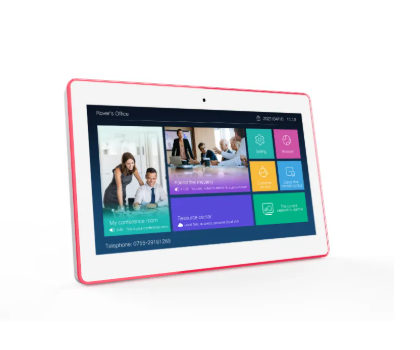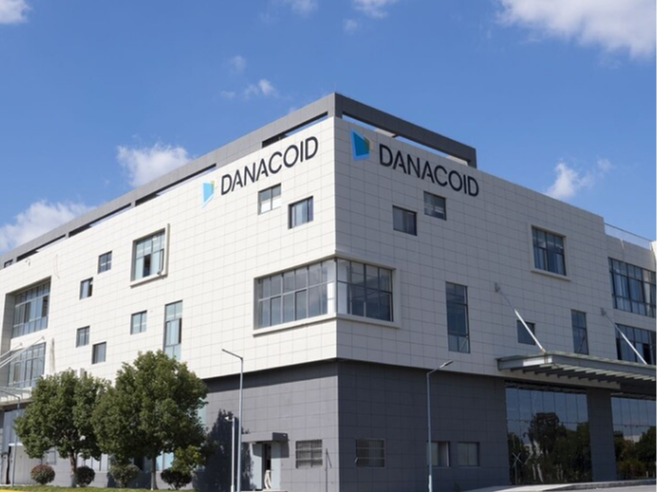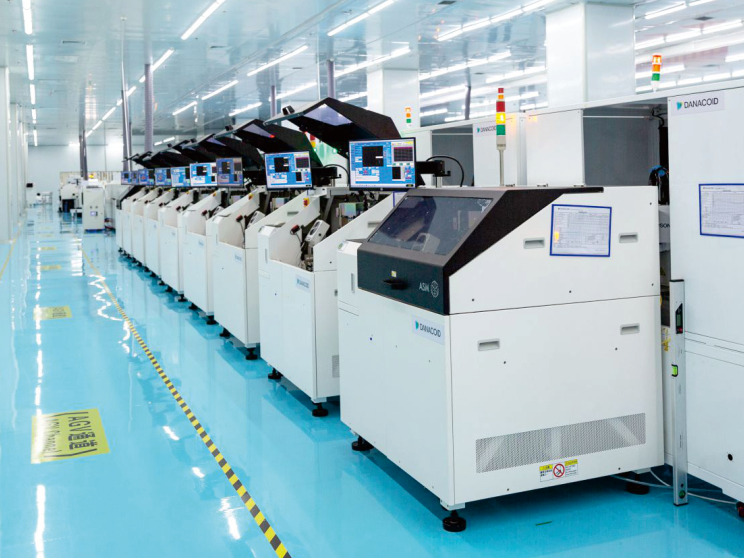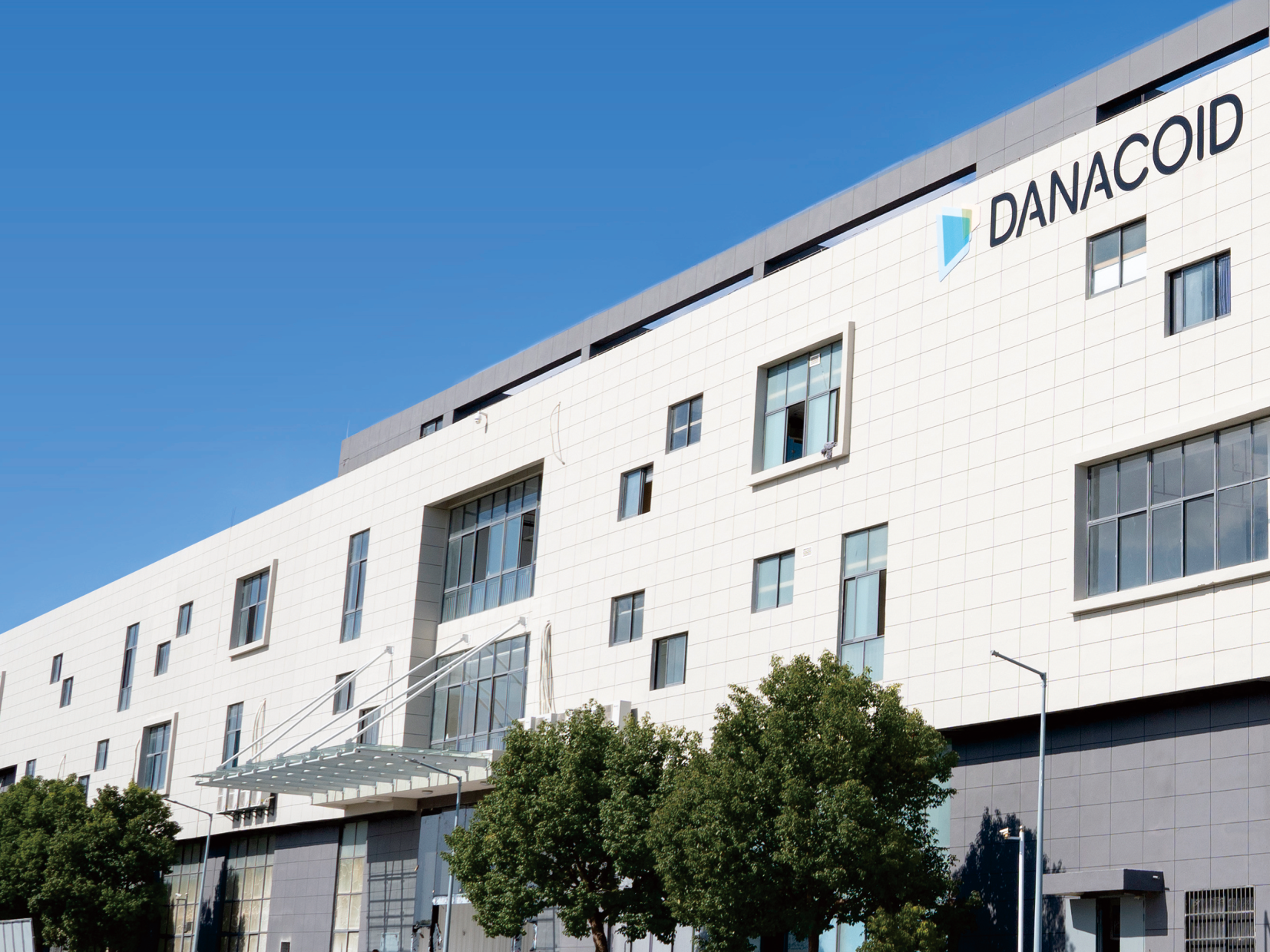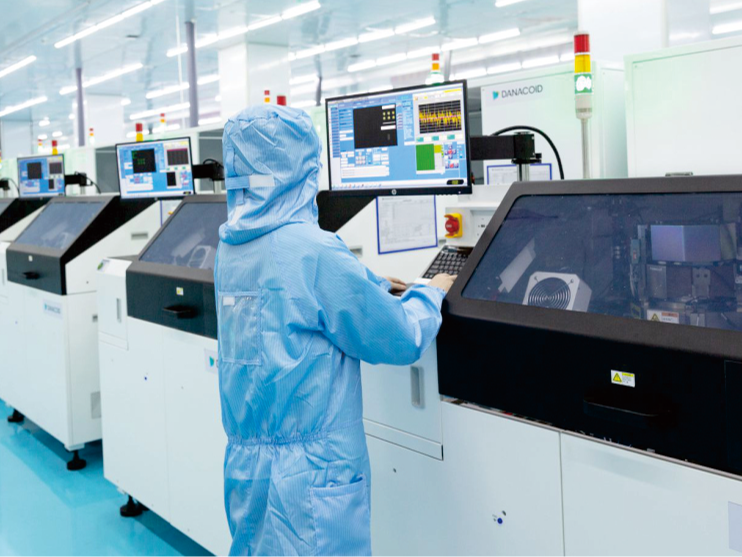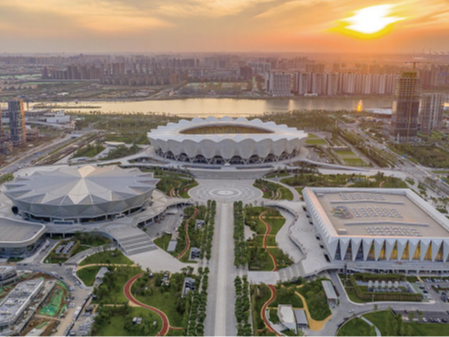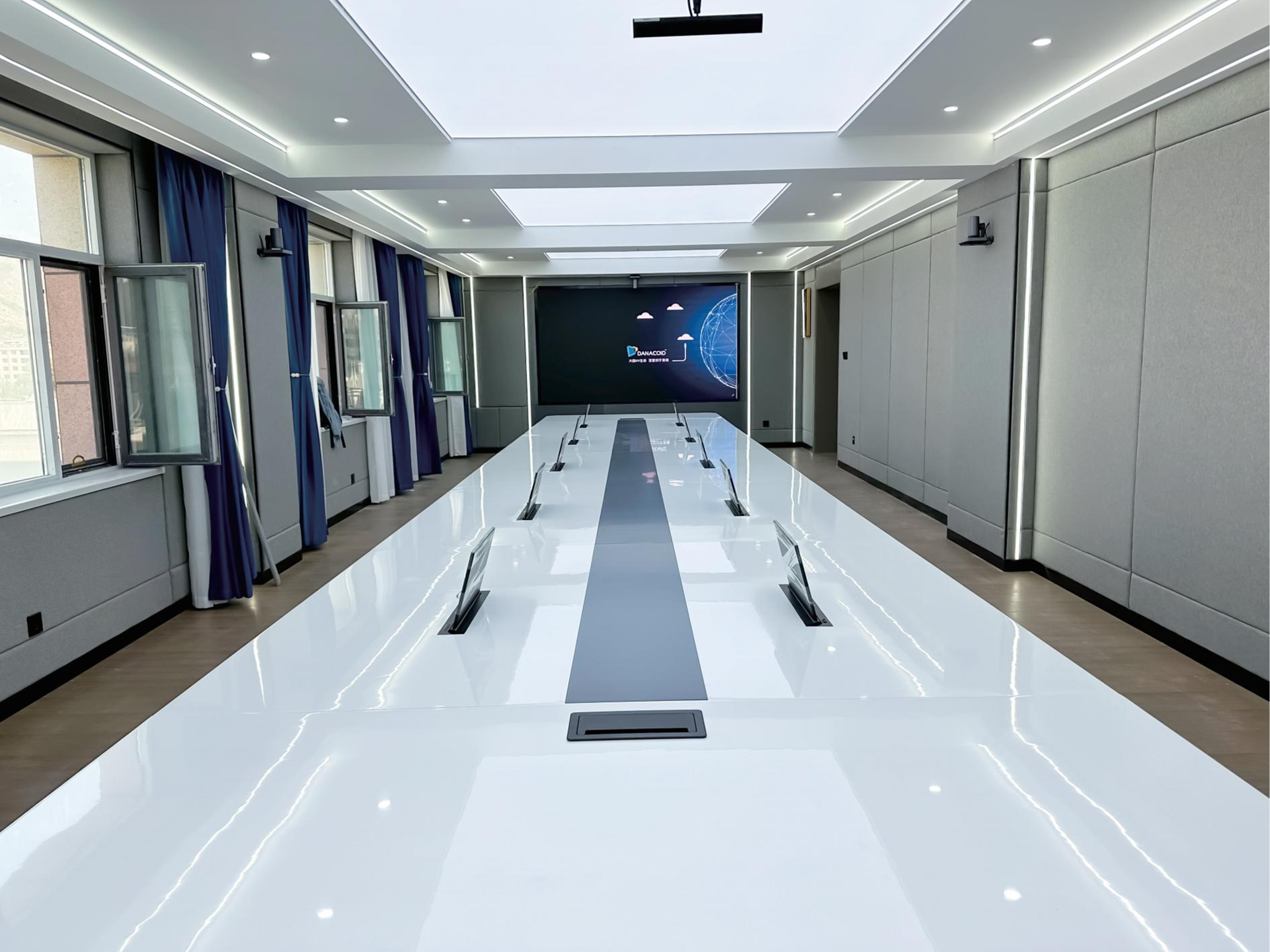Resolution and Image Quality Standards
4K vs HD: Choosing the Right Clarity
When selecting a video conferencing camera, one of the key considerations is the resolution, with 4K and HD being the most common options. 4K resolution offers four times the resolution of 1080p HD, providing significantly clearer and more detailed images. This clarity is essential for professional settings where understanding subtle facial expressions and gestures is crucial. For example, during a large conference, a 4K camera can ensure every participant's facial expressions are visible, enhancing communication effectiveness.
The advantages of 4K cameras in video conferencing are numerous. They not only improve clarity but allow for better zooming without losing detail, making them suitable for large meeting rooms. However, budget considerations often lead businesses to opt for HD cameras, especially in smaller, cost-conscious environments. HD cameras, while offering respectable clarity, are more affordable and sufficient for smaller meetings or personal use where ultra-high resolution is not critical.
According to industry statistics, the adoption of 4K technology in video conferencing has been steadily increasing. This trend is driven by the demand for higher video quality and the decreasing costs of 4K cameras. As the technology becomes more accessible, it's important for businesses to evaluate their specific needs and balance between quality and budget when choosing between 4K and HD cameras.
Low-Light Performance and Dynamic Range
Low-light performance in video conferencing cameras refers to the camera's ability to record clear images in dim environments, a common scenario in many conference rooms. A camera with good low-light performance allows for visible video feeds without the need for bright lighting, which can be uncomfortable or impractical. This feature is critical for maintaining a professional video quality regardless of the lighting conditions.
Dynamic range is another vital specification that assesses a camera's proficiency in capturing details in both shadowed and brightly lit areas. A high dynamic range ensures that all participants and the surrounding environment are adequately visible, preventing washed-out highlights or murky shadows. Technologies like larger sensor sizes and advanced lens coatings contribute significantly to enhancing low-light performance and dynamic range, providing a clearer image even in challenging conditions.
Experts emphasize the importance of dynamic range in ensuring quality video conferencing experiences. For instance, studies have shown that a better dynamic range contributes to improved video legibility, making it easier for participants to engage and collaborate effectively. By opting for cameras with superior low-light performance and dynamic range, businesses can deliver consistent video quality, regardless of the setting or time of day.
Wide-Angle Lenses for Group Meetings
Field of view (FoV) plays a crucial role in video conferencing, especially when accommodating larger groups. Wide-angle lenses are specifically designed to capture a broader view, enabling groups to fit comfortably into a single frame without the need for participants to huddle together. In various settings, an ideal FoV can range from 90 to 180 degrees, with recommendations varying based on room size. This flexibility makes wide-angle lenses highly effective for both small meetings and larger conference rooms. However, it's essential to acknowledge potential downsides, such as image distortion or edges appearing out of focus, which can occur with wider lenses. According to insights from conferencing professionals, wide-angle lenses are particularly effective in real-world scenarios where physical setup changes are impractical. Their feedback highlights the adaptability of such lenses and a positive impact on meeting dynamics, underlining the importance of balancing image clarity and field coverage.
Auto-Framing and Speaker Tracking
Auto-framing technology is a game-changer in video conferencing. By automatically adjusting the camera's view to ensure all participants remain visible, it eliminates the hassle of manual camera controls. This feature is particularly beneficial in dynamic meetings where participants may move around or join remotely. Equally important is speaker tracking technology, which enhances engagement by intelligently focusing on the active speaker. This not only increases participation by reducing distractions but also maintains a sense of connection, as if participants are conversing face-to-face. Technologies like facial recognition and movement detection have been instrumental in refining these features, ensuring more accurate and responsive camera behavior. Research and user testimonials from corporate environments underscore the effectiveness of such technologies. They emphasize how businesses have experienced improved interaction and efficiency in meetings, illustrating the value of auto-framing and speaker tracking in achieving seamless, high-quality video conferencing experiences.
Pan-Tilt-Zoom (PTZ) Functionality
Remote Control Flexibility
Pan-Tilt-Zoom (PTZ) functionality offers remarkable advantages in the world of video conferencing, particularly through its remote control capabilities. These features enable operators to adjust camera views dynamically, thereby enhancing interaction with participants by allowing varied angles and perspectives. This flexibility is key during large meetings or conferences, where capturing the nuances of diverse interactions can significantly improve the overall experience. For instance, in a corporate setting, this might involve focusing on different speakers or adjusting the view to accommodate unexpected movements or changes in the room layout. Reviews from conferencing experts often highlight the importance of PTZ functionality, especially in maintaining high engagement levels and ensuring clarity across different participant segments.
Preset Positions for Seamless Transitions
Preset positions are invaluable in PTZ cameras, allowing for quick transitions between different angles and focuses. These predefined angles can lead to increased meeting efficiency by seamlessly switching views from one participant to another or from speaker to presentation content. The intuitive nature of preset functions means that operators can save time and effort, making meetings smoother and more fluid. However, setting up these presets can require a certain degree of familiarity and preparation, which might present challenges for some operators. Nonetheless, user experiences often demonstrate the dramatic benefits of using preset positions during live events, as they support effortless adjustments without disrupting the flow of communication. By maximizing PTZ functionality, meetings can achieve greater levels of engagement and effectiveness.
These elements collectively underscore why PTZ cameras are considered essential for not just capturing high-quality images, but also for facilitating exceptional video conferencing experiences.
Audio-Visual Synchronization
Built-In Microphone Arrays
The significance of built-in microphone arrays in video conferencing cameras cannot be overstated. These arrays are designed to capture sound from multiple directions, ensuring that every participant's voice is heard clearly, even in a crowded room. Specialized microphone arrays differ from standard microphones due to their superior sound quality and wider pickup range, making them ideal for conferencing settings. The technology behind these arrays often includes beamforming, which significantly enhances audio clarity by focusing on the direction of desired speech and reducing background noise. Studies have shown that high-quality microphone systems can improve communication effectiveness, with participants reporting a 25% increase in clarity and comprehension during meetings.
Noise Cancellation Integration
Noise cancellation is crucial in video conferencing, as it ensures clear audio for effective communication. This technology minimizes ambient noise, allowing participants to focus on the conversation. Video conferencing cameras employ various noise cancellation techniques such as passive noise suppression, which uses physical barriers, and active noise cancellation, which employs sound waves to cancel out noise. In real-world applications, noise cancellation has significantly improved conference outcomes, especially in busy environments like open-plan offices or home setups with background noise. Testimonials from users often highlight enhanced audio clarity, resulting in more productive meetings. According to research, noise cancellation can increase the overall efficiency of conferencing by up to 30%, showcasing its importance in enhancing the conferencing experience.
Compatibility and Software Integration
Platform-Specific Optimization (Zoom, Teams)
Compatibility with major video conferencing platforms like Zoom, Microsoft Teams, and Google Meet is crucial for seamless communication. Cameras with platform-specific optimizations can enhance user experiences by leveraging features tailored to each system’s capabilities. For instance, specific cameras may offer better image resolution or automatic adjustments for platforms like Zoom or Teams, ensuring clarity and ease of use during meetings. Without proper software integration, users might face issues such as degraded video quality or operational difficulties. For example, some users might experience lag or poor video transmission if their camera isn’t optimized for their preferred video conferencing software. Data shows that customer satisfaction ratings are markedly higher when there is smooth integration with these platforms, underscoring its critical importance.
Firmware Updates and Future-Proofing
Firmware updates play a vital role in maintaining the functionality and security of video conferencing cameras. Regular updates can enhance features, ensure compatibility with new software releases, and effectively extend the lifespan of the equipment. Organizations are advised to manage their hardware proactively to leverage the latest advancements in camera technology. Experts often highlight that future-proofing through firmware updates is essential for technological longevity. Keeping equipment updated not only safeguards it against security vulnerabilities but also ensures it remains functional and efficient as new software environments evolve. By adopting such strategies, businesses can future-proof their technology investments and ensure ongoing effectiveness in their video conferencing solutions.
FAQ
What are the benefits of using 4K cameras over HD cameras in video conferencing?
4K cameras offer four times the resolution of HD cameras, providing much clearer and more detailed images. This is especially beneficial in professional settings where facial expressions and gestures are crucial for effective communication.
How does low-light performance affect video conferencing quality?
Low-light performance impacts the clarity of video feeds in dim environments, allowing for high-quality video conferencing without needing bright lighting. It is essential for maintaining professional video quality regardless of lighting conditions.
What is auto-framing technology?
Auto-framing technology automatically adjusts the camera's view to keep all participants visible, eliminating the need for manual camera control. It is particularly useful in dynamic meetings with active participants.
Why is noise cancellation important in video conferencing cameras?
Noise cancellation minimizes background noise, ensuring clear audio and effective communication, especially in noisy environments like open-plan offices or home setups.
How do firmware updates benefit video conferencing cameras?
Firmware updates enhance features, improve compatibility with new software, and extend the equipment's lifespan, ensuring technological longevity and security.
Table of Contents
- Resolution and Image Quality Standards
- Pan-Tilt-Zoom (PTZ) Functionality
- Audio-Visual Synchronization
- Compatibility and Software Integration
-
FAQ
- What are the benefits of using 4K cameras over HD cameras in video conferencing?
- How does low-light performance affect video conferencing quality?
- What is auto-framing technology?
- Why is noise cancellation important in video conferencing cameras?
- How do firmware updates benefit video conferencing cameras?


